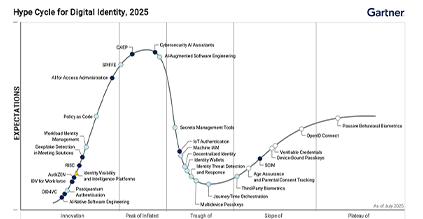4 HR digital transformation trends in 2026

Digital technology advancements in recent years have significantly transformed not only how we work but also the workplace in general. This has proven to be true specifically for human resource (HR) departments. They have needed to adapt to the hybrid work environment and significantly uplevel their workflows to digital processes.
HR management can use digital tools to streamline tasks like hiring, onboarding, offboarding, and benefits management to increase productivity across the entire enterprise, enhance employee experience, and eliminate manual tasks.
In this blog, we will explore the four trends that will likely impact HR departments' digital transformation in 2025.
1. Prioritizing HR workflow automation
The average HR leader spends nearly half of their time on administrative tasks. In 2025, we can expect to see more leaders leaning into automation to expedite their day-to-day tasks.
The benefits of HR automation are fruitful. Research shows HR automation can decrease administrative costs by 30% for HR professionals and 49% for employers. Additionally, generative artificial intelligence (AI) tools, such as ChatGPT and Gemini, are particularly well-suited for HR automation. They can save time doing things like writing job descriptions and answering onboarding questions.
Automation assists HR professionals by taking care of daily tasks. This gives them more time to focus on complex challenges and long-term objectives. As a result, they are able to uplevel in their careers and, depending on job function, roles could be augmented (not replaced) by AI.
HR leaders who continue to automate and invest in AI technology will improve efficiency, employee satisfaction, and the overall performance of their departments.
2. Hybrid work environments are here to stay
Remote work has arguably impacted human resource departments the hardest in recent years. They must navigate mixed environments while focusing on building relationships and staying true to their core responsibilities. Flexible work and the concept of work-life balance will continue to flourish in 2025.
However, it can’t be overlooked that hybrid work environments have a significant impact on workplace relationships and performance management. Over half of remote workers say it’s harder to feel connected to their coworkers in remote environments.
Suitable digital tools can facilitate interactions with new hires and employees more easily. For new hires in a hybrid work environment, the first impression is very important. You don't want the old "scan, sign, and email" process to be the first impression new employees have.
So what does this mean for HR leaders? A people-first strategy will be crucial.
Equipping managers with people-centric skills can lead to:
- Collaboration and harmony among team members
- Increased employee satisfaction
- Better performance
- Improved retention
- A psychologically safe work environment
3. Adapting to limited budget constraints
With budgets under scrutiny, efficiency and savings are top of mind for HR leaders. Budget cuts introduce new financial constraints that will certainly impact multiple aspects of HR departments. For example:
- Employee staffing: Many HR teams will likely experience staff reductions and hiring freezes, increasing the workload of remaining HR personnel. This also means recruiting activities will pause, making it challenging to attract — and possibly retain — top talent.
- Training & development: HR departments may need to reduce training and development programs. This will impact not only the talent of the workforce but also employee engagement and morale.
- Employee benefits: Limited funds can restrict benefit offerings, directly impacting employee satisfaction and retention across the enterprise.
- HR technology: The hype around new technologies, such as GenAI, will be difficult to adopt during budget cuts. However, many HR leaders are under pressure to invest in innovations and do more with fewer resources. Leaders will be on the hunt for cost-effective solutions.
- Security: Compliance laws are important for security. Limited budgets can make it difficult for HR departments to follow labor laws and assess risks effectively.
Maintaining HR operations can be difficult when faced with financial constraints. However, HR operation managers must adapt by prioritizing essential functions and cost-effective solutions to keep their departments running smoothly. This may mean exploring new tech solutions to meet their evolving needs in a seamless and cost-effective way, such as switching eSignature vendors.
4. Cybersecurity is not a “nice to have” – it’s required
There has been a rising number of high-profile cybersecurity cases. More media attention has made people realize that cybersecurity is important for businesses to operate safely and effectively. What’s more, the total cost of cybercrime globally reached $8 trillion in 2023. Experts predict it will reach $10.5 trillion by 2025.
Employees themselves often fall victim to these schemes. In 2023, breaches of employee data increased by 41%, with even the EU Parliament suffering a data breach of its online recruitment application.
As more employees are targeted by cyber threats, HR staff must be vigilant about security procedures and workforce education. Investing in the right software can significantly improve security posture and protect organizations from a range of threats.
For example, a company can add multi-factor authentication (MFA) and passwordless authentication to its systems, applications, or data. MFA adds an extra layer of protection to authentication processes especially for remote employee login, ensuring the right individuals have access to certain resources. Organizations must update processes accordingly, as cybersecurity threats are constantly evolving.
A component of this extends to the process of signing and maintaining employee documentation. For instance, HR teams should avoid sharing private documents with confidential information outside of their department – even with new hires. In fact, some employees may not even be real. Some may only be there to steal confidential information, or even upload malware into your company, such as the fake IT workers that turned out to be North Korean hackers in disguise. In a separate incident shared on Linkedin by Rob Leslie, founder and CEO of Sedicii, a scam using deepfake AI almost fooled the CEO and his hiring team when interviewing fake candidates who reached final interviews. It's shocking, sophisticated, and a wake-up call for recruiters.
Proper security measures, such as multifactor verification or identity document verification (IDV) can help HR departments avoid eSignature fraud schemes. From onboarding to benefits management, implementing a secure eSignature solution protects both employees and the company.
HR in 2025: A look ahead
Digital transformation trends that prioritize efficiency, security, and employee-centric approaches will shape the 2025 HR landscape. HR workflow automation technologies will replace traditional, manual processes, enhancing the overall employee experience.
And an unintended bonus? Embracing these changes can give HR departments a competitive edge by attracting and retaining top talent.
Learn how HR teams can leverage automation and integrated eSignature solutions to deliver a seamless and secure experience.









